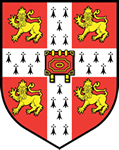Part 6: Domains for the evaluation of morphological theories
Chapter 25: Frequency and corpora
Chapter 26: Morphology in linguistic typology
Chapter 27: Morphology in language change
Chapter 28: Morphology and language acquisition
Chapter 29: Experimental morphology
Chapter 30: Computational morphology
The final part looks at various contexts in which morphological theory can be assessed. Three chapters focus on methods of evaluation. Chapter 25 (‘Frequency and corpora’) offers a survey of frequency-based work on morphology, including a section on the use of corpora for investigating morphological phenomena. Chapter 29 examines experimental work on morphological processing, elucidating its implications for the appraisal of competing theoretical approaches. Chapter 30 (‘Computational morphology’) evaluates morphological theories in terms of their computability, with attention to such issues as lexical representation, generation and parsing. In addition to these chapters on evaluative methods, Part 6 contains chapters on three observational domains in which distinct morphological theories predict different kinds of regularities: linguistic typology, language change and language acquisition.
Jump to:
Part 1: Foundations of morphological theory
Part 2: Issues in morphological theory
Part 3: Morphological principles
Part 4: Morphological frameworks
Part 5: The role of morphology in theories of phonology and syntax
Appendix: Sources and resources for morphological research

